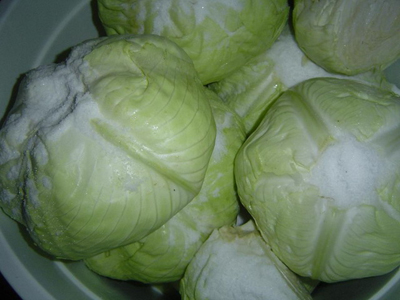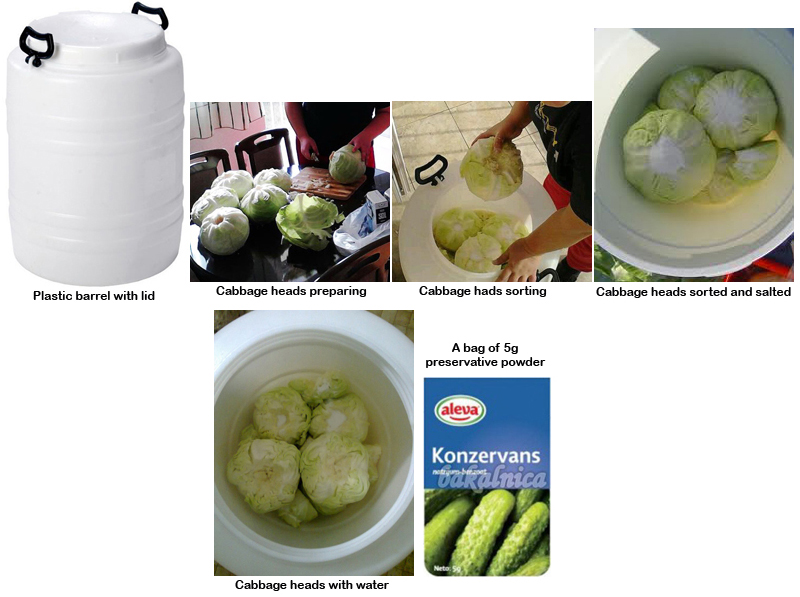
- Ingredients :
25kg of cabbage hads
1kg salt
1 small bag (5g) of preservative powder (Konzervans) - Accessories :
25 liters plastic barrel with lid
5 liters watering can
Preparing :
Step 1 :
Clean cabbage heads and remove the outside damaged cabbage leaves. Make conical hole about 5-6cm deep, with the knife, into the cabbage root (We call it “cabbage heart”)and be careful the cabbage heads not to fall apart. Do the same procedure with each cabbage head.
Step 2 :
Fill in, to the top of the cabbage conical hole, with the salt using the table spoon and start to sort the cabbage heads, row by row, into the plastic barrel keeping the filled cabbage holes upwards (To prevent the salt not to be poured out from the holes). Pour the salt over each row of cabbage inside the barrel until you reach to the top of the barrel. To make more efficient space between the cabbage heads, halve one or two of them and squeeze them into the appropriate empty space inside the barrel. After reaching to the top of the barrel and after pouring the salt, squeeze the cabbage with some heavy object (A clean washed stone over the grid, or something heavy, that fits the barrel opening)and put the barrel’s lid on. Leave it to stay that way in a dry and cold, but not freezing, place for one day (Overnight).
Step 3 :
The next day take off the barrel lid, take out the squeezing grid and stone, and carefully pour the water inside the barrel, little by little, that cabbage and salt absorb the water. When you fill the barrel with water almost to the top (Leave the space for a squeezing grid and heavy stone return), put the barrel’s lid and keep the barrel in dry and cold, not freezing, place for about two or three weeks until the fermentation process was finished. After this process, open the barrel and pour inside one small bag (5g) of preservative powder (Konzervans) that keeps pickling cabbage long lasting.
After about two or three weeks, when the whole process was ended, the pickled cabbage could be used in various cases as a salad (Cut to a smaller pieces) to a meat food addition, especially with roasted meat, fried meat with the potato etc. The pickled head leaves are especially used for a well known Serbian specialty recipe, cabbage rolls (Sarma).




I added pickling vinegar to my water. Is this a problem?
Hi John, I’m not Serbian but follow natural pickling/fermentation principles. You should never use vinegar if you want to do natural fermentation because vinegar kills all the good bacteria formed in the natural fermentation process. Keep it natural and you’ll be fine.